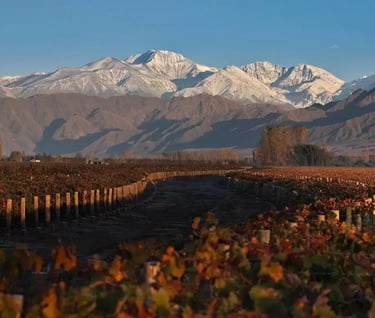
Subscribe to our newsletter
Investing in Emerging Wine Regions
Risks and Rewards for the Adventurous Investor
10/20/20233 min read


When it comes to wine investing, established regions like Bordeaux, Burgundy, and Napa Valley often steal the spotlight. However, adventurous investors are increasingly looking towards emerging wine regions to explore untapped opportunities and diversify their portfolios. These lesser-known territories in the fine wine market offer unique advantages and challenges that can lead to potentially rewarding investments. In this article, we will delve into the world of investing in emerging wine regions, discussing the risks and rewards that come with venturing beyond the traditional wine-producing areas.
The Allure of Emerging Wine Regions
Emerging wine regions encompass a diverse array of locations worldwide, each offering a distinctive wine experience. From the rugged landscapes of the Patagonia region in Argentina to the historic vineyards of Croatia's Dalmatian Coast, these regions have begun to captivate the attention of wine enthusiasts and investors alike.
One of the primary attractions of investing in emerging wine regions is the potential for unique and high-quality wines. With unexplored terroirs and a blend of traditional and innovative winemaking techniques, these regions can produce wines with exceptional character and distinct flavors. Such wines can stand out in a saturated market and attract a niche audience of wine connoisseurs and collectors, driving up their value over time.
Moreover, investing in emerging wine regions allows investors to enter the market at a more affordable price point. Compared to the premium prices commanded by established regions, wines from emerging areas tend to be more accessible, providing an entry point for investors seeking to build a diverse wine portfolio without breaking the bank.
Assessing Risks in Emerging Wine Regions
While the allure of unique wines and lower entry costs is enticing, investing in emerging wine regions also comes with its share of risks. The lack of historical data and established reputation can make it challenging to predict the future performance of wines from these areas accurately.
One significant risk involves market recognition and consumer demand. Established regions benefit from a long-standing reputation, which attracts buyers and drives demand. However, emerging regions may struggle to gain recognition and compete with well-established players in the market. It may take years or even decades for wines from these regions to gain the attention and trust of consumers and collectors.
Another factor to consider is the volatility of emerging markets. Economic and political factors can impact the stability of these regions, affecting both wine production and export. Investors need to be aware of the risks associated with investing in areas with potentially unstable market conditions.
Mitigating Risks and Maximizing Rewards
To make informed investment decisions in emerging wine regions, investors should adopt a cautious and well-researched approach. Here are some strategies to consider:
_ Thorough Research: Conduct extensive research on the region's history, terroir, and winemaking practices. Understand the challenges and opportunities unique to the area and evaluate the reputation and track record of wineries and producers.
_ Seek Expert Advice: Consult with wine experts, sommeliers, and industry professionals who have experience in the region. Their insights can provide valuable guidance and help investors identify promising opportunities.
_ Diversification: As with any investment strategy, diversification is key. Spread your investment across different emerging wine regions to minimize risk and capture potential rewards from multiple sources.
_ Long-Term Vision: Investing in emerging wine regions requires patience and a long-term perspective. Allow the wines to mature and gain market recognition over time, potentially increasing their value in the future.
_ Visit the Region: Whenever possible, visit the emerging wine region to experience firsthand the wines, culture, and potential for growth. Building personal connections with producers can provide valuable insights into the region's future prospects.
Conclusion
Investing in emerging wine regions offers adventurous investors the opportunity to discover unique wines and diversify their portfolios. While the risks are present, a well-researched and cautious approach can lead to rewarding investments in these untapped territories. As with any investment, understanding the specific risks and rewards is essential for making informed decisions that align with your investment goals and risk tolerance. With the right strategies and a taste for adventure, exploring emerging wine regions can be a thrilling journey of discovery and potential profits in the dynamic world of fine wine investments.
Don't miss out on the latest news and updates from the world of fine wines! Subscribe to our WineLux newsletter to receive exclusive content, industry trends, and expert tips. Join our community of wine enthusiasts and stay up to date with the latest developments in the fine wine industry!
